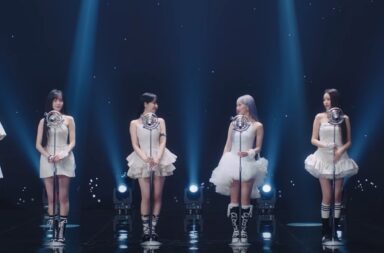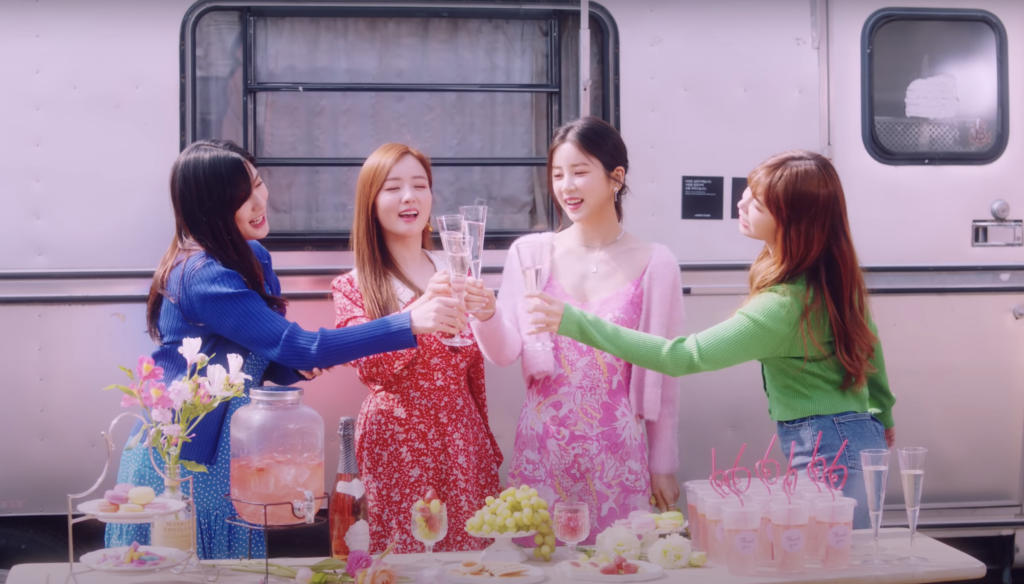
Over the past ten years, Apink has had quite the career. They’ve had so many triumphs: music show wins, nine EPs and three full albums, and concert tours across Asia and North America. But with their incredible success, Apink has also faced plenty of tumult, most notably with former member Yookyung’s departure.
Beyond simply attaining success, Apink’s career has also followed a very unique trajectory. Instead of finding instant fame with a single hit song, the girl group has instead cultivated a steady, loyal fanbase by consistently sticking to bubblegum concepts — with little variation.
In fact, Apink only departed from this sugary template seven years into their career, with their shockingly different “I’m So Sick.” Since then, Apink has undergone a dramatic transformation, pursuing sleek, boundary-pushing electronic songs instead.
Considering their three recent title tracks (“I’m So Sick,” “Eung Eung,” and “Dumhdurum”), their latest song “Thank You” is a surprising foray into their older, cuter concepts. As their 10th anniversary fan song, “Thank You” remains heartfelt throughout, serving as a simple ode to Pandas (Apink’s fans).
From its bright pastels to its airy pop sound, “Thank You” compiles plenty of nostalgia-slicked nods to Apink’s past. These references come thick and fast, comprising much of the MV’s running time. Some are obvious, others less so.
Among the obvious ones: early on in the MV, Bomi and Eunji flip through a Snow Pink album photobook. Since Snow Pink hails all the way back from 2011, Apink’s debut year, its appearance is a heartwarming reminder of the girl group’s rookie days. Indeed, it is almost shocking to compare the cutesy, adorable Apink of 2011 to the slick, self-assured Apink of today.
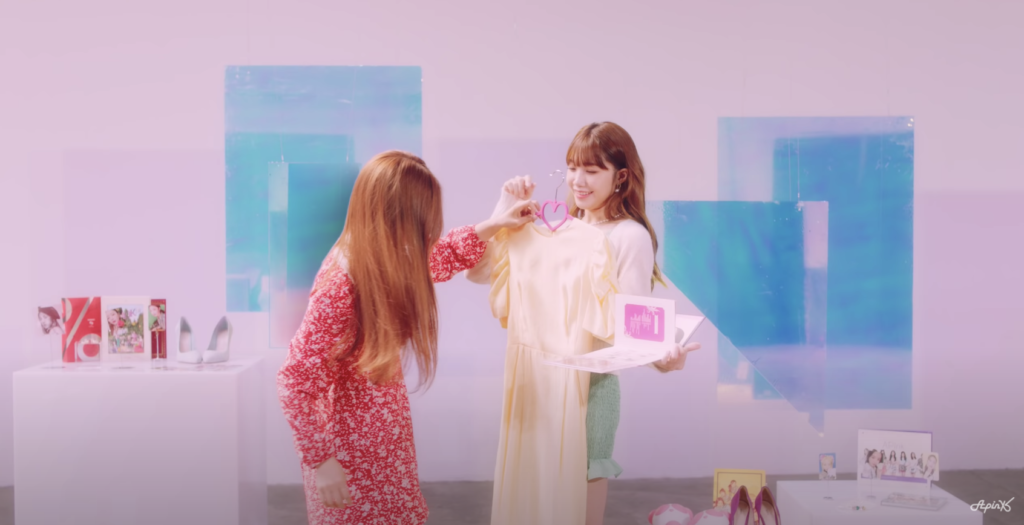
Later in “Thank You,” Namjoo and Hayoung set up a photo exhibition of past Apink photos, including old album teasers. These photos are notably more mature in tone than Snow Pink’s white tutus; they feature stark lighting, artsy and streamlined costumes, and bolder colors. This photo exhibit is, like the Snow Pink appearance, a reference to Apink’s past. However, it also shows their artistic and stylistic growth.
Near the end of “Thank You”’s MV, the six Apink members gather by a wall, onto which videos of past concerts and music show wins have been projected. By including so many visual snippets of their greatest triumphs, Apink both thanks fans for supporting them through the past ten years, and also reminds viewers of all the reasons to love this talented girl group. Seeing this display of Apink’s most joyous memories, we viewers can’t help but wonder what new heights they will reach in the future.
Beyond these obvious references, “Thank You” also includes more subtle Easter eggs for their older fans to discover.

In the MV, Naeun picks up a pink rose from a table holding various other pink objects: a pinwheel, a record player, a pair of keys, and more; each of these objects featured prominently in a past era. The pinwheel comes from Apink’s debut song “I Don’t Know” (2011), the record player from Pink Up’s album cover (2017), the keys from “I’m So Sick” (2018).
These Easter eggs only appear once onscreen, and are easily missed — they serve as a fun way of showing appreciation for Apink’s older fans, who are more likely to notice these small pink details than newer Pandas.
Additionally, since this Easter egg-laden scene is bathed in blues and pinks, it fits right in with “Thank You”’s bright color scheme. The color choices are also symbolic: pink has featured prominently in Apink’s past MVs and album titles (evidenced by Pink Memory, Pink Blossom, Pink Doll, etc.). And blue is a calming color, lending an air of serenity to the MV.
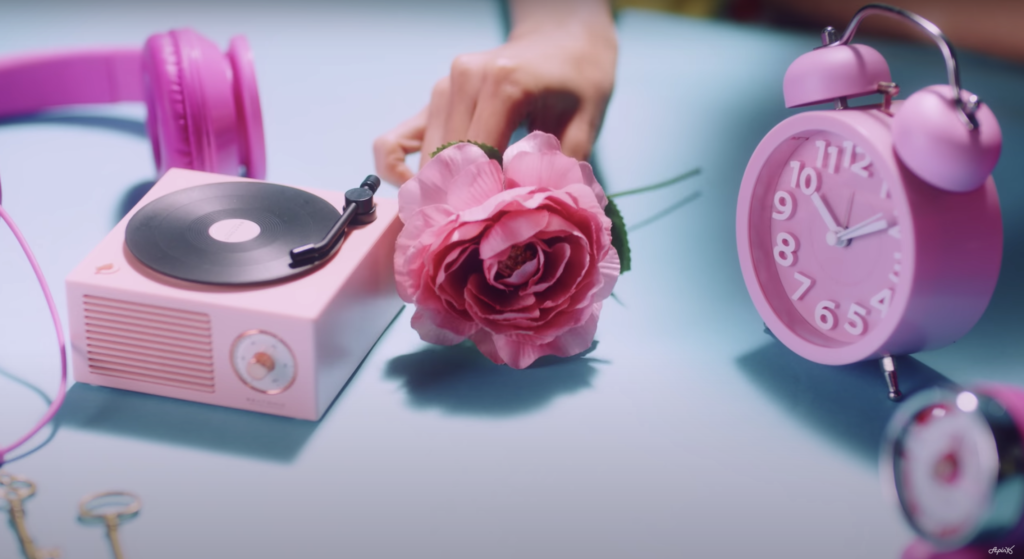
Beyond its direct and indirect references to Apink’s past, “Thank You” further builds nostalgia through more standard techniques, which aren’t specific to Apink themselves.
The MV uses warm brown wood tones and home video-style effects to create themes of memory and reminiscence. “Thank You”’s home video-like clips add an edge of rawness. This hint of intimacy tempers the polished sheen of the rest of the MV, adding character to an otherwise honed-to-perfection video. Furthermore, the color brown is heavily associated with the past, as it suggests sepia-tinted memories.
“Thank You” ties in with Apink in other, nonvisual ways, too: leader Chorong co-wrote the lyrics for “Thank You” — just as she has done with all of Apink’s anniversary songs, starting from the very first one, “April 19th.”
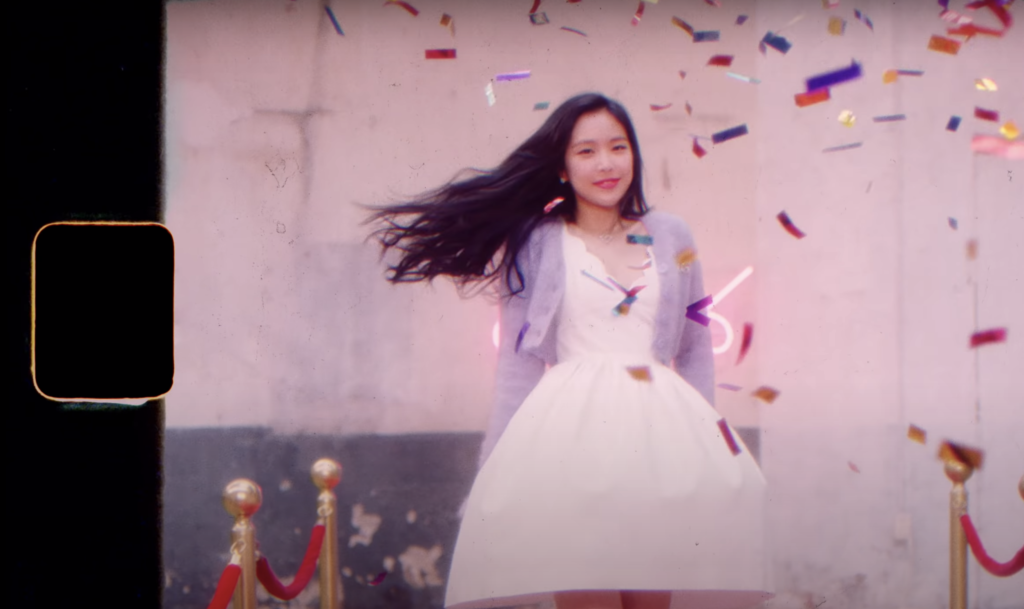
“Thank You” incorporates the notes of celebration, nostalgia, and gratitude expected in anniversary songs. At times, it becomes more poetic than a standard K-pop song. One line of particular note: “I want to send you my 10th color.” This line both references Apink’s 10th year in the industry, and also uses a metaphor to show Apink’s continued devotion to their fans.
Chorong is not the only member speaking up through this MV; all Apink members include a handwritten thank-you message at the end of “Thank You.” These little snippets flash by in a parade of candy-colored gratitude, ending the MV on a high note.
“Thank You” is an unambitious MV. It doesn’t make any bold pop declarations or explore any innovative visual territory. “Thank You” simply expresses heartfelt gratitude for this past decade.
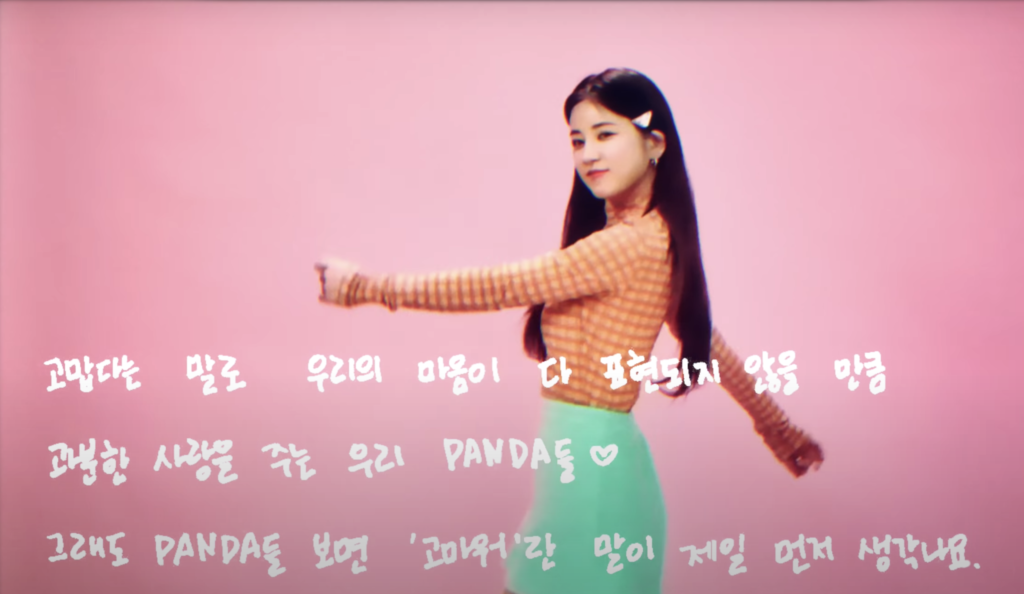
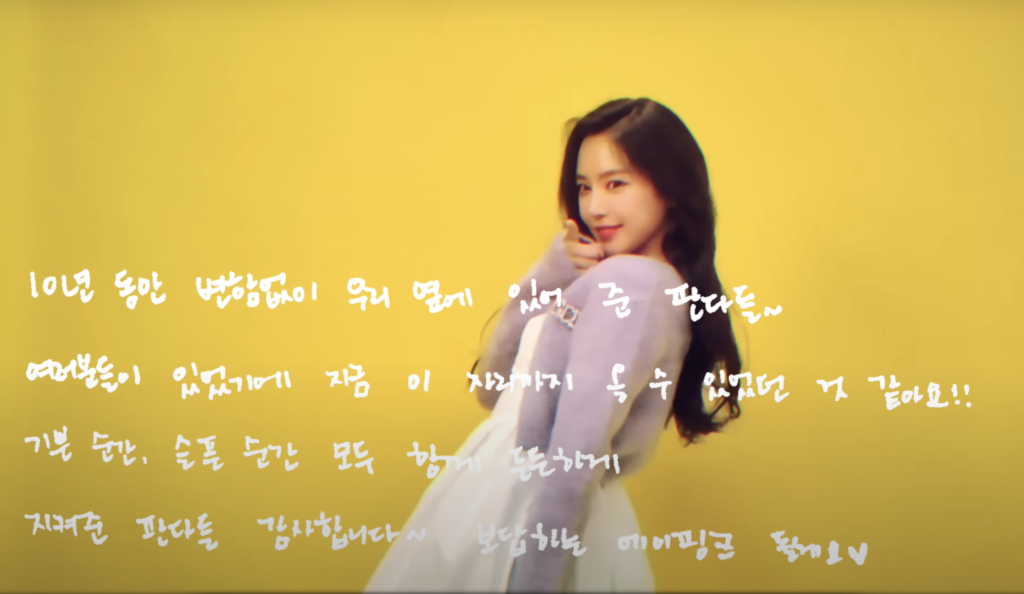
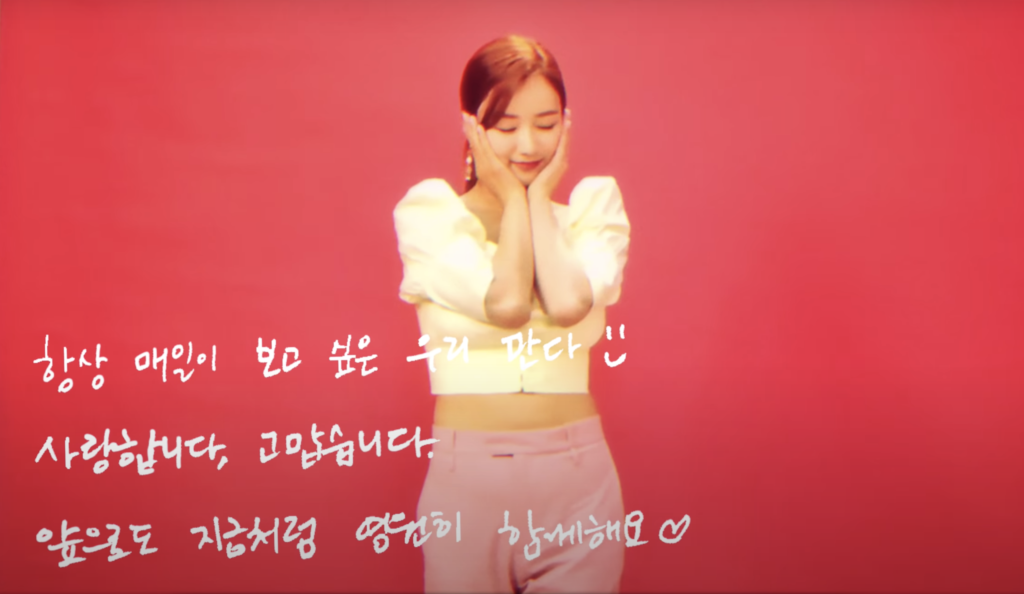

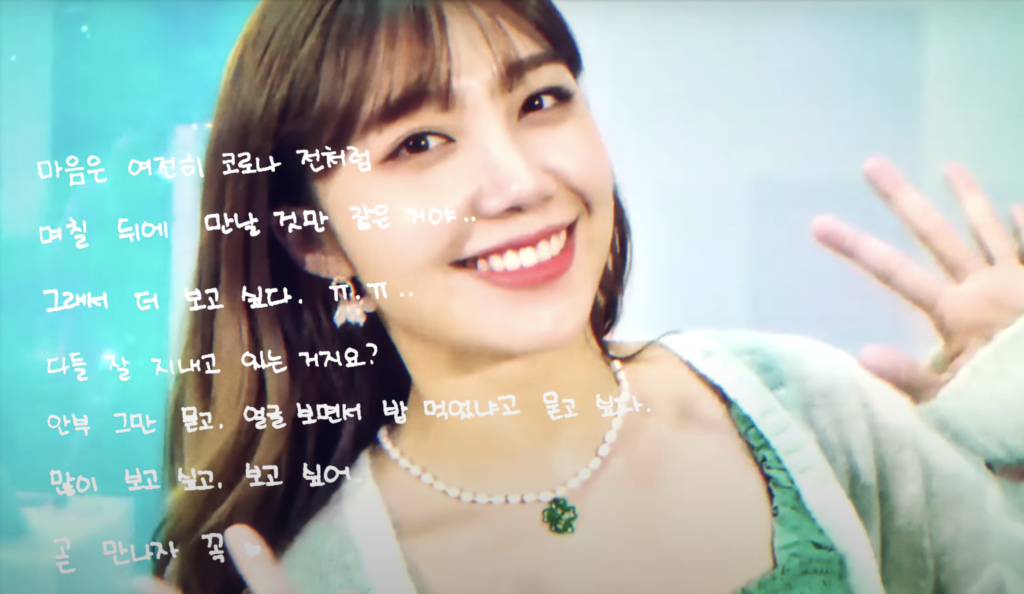
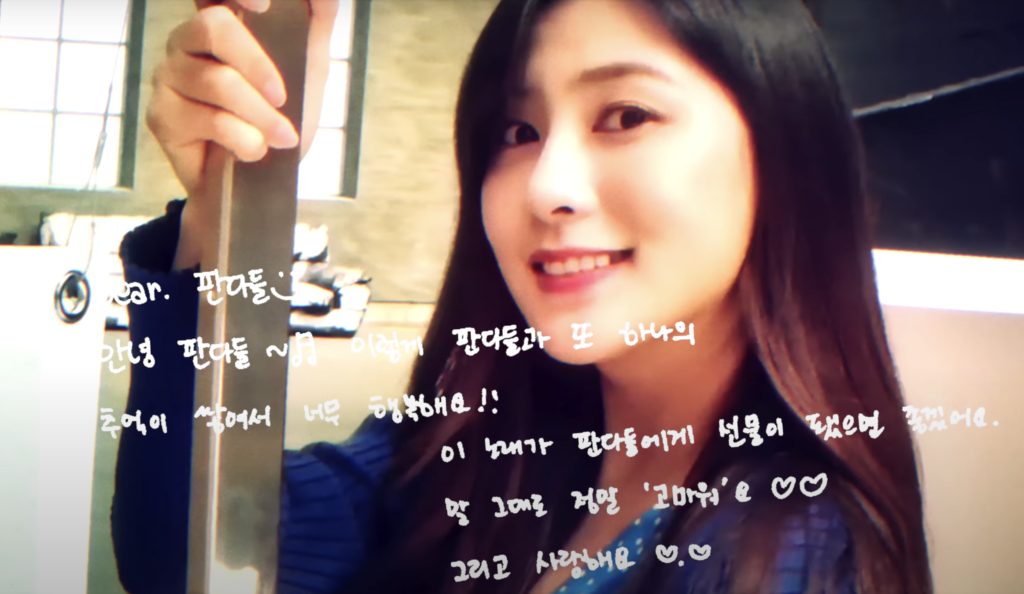
The MV recalls Apink’s greatest triumphs, celebrates their longevity as a group, and reveals glimmers of rawness. It is a heartfelt expression of gratitude to their fans, who have supported them through a decade’s worth of joys and pains. And this simplicity is what makes “Thank You” so convincing.
Thank you, Apink, for this decade you’ve given us.
(Yotube. Images via Play M Entertainment.)
